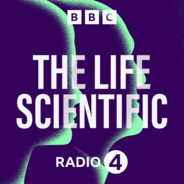An ecologist who fell in love with computing, Jacqueline McGlade pioneered the use of satellites study the state of the global environment. Today thanks to programmes like Google Earth, we can see the surface of the earth in great detail. But when Jacqueline was a student, earth observation satellites were used for weather forecasting and not much else. Early in her career, she used satellite images to study fish populations, thinking it would be useful to know not only how many fish were in the sea but where they were likely to be. Few believed such an ambitious undertaking would be possible but, after a spell in Silicon Valley, Jacqueline found a way. The moving maps she created changed the way oceanographers and fishermen viewed the sea. In the early 1980s, she started trying to model the global climate using some of the earliest supercomputers and a roomful of un-networked PCs. As Executive Director of the European Environment Agency, she introduced monitoring systems for a range of environmental indicators and insisted that the information provided by Europe’s first earth observation satellite should be made available to everyone for free. She retired from her latest job, as chief scientist to the United Nations Environment Programme last year and now lives in a mud hut in the Masai Mara, having married a Masai chief.
Producer: Anna Buckley
Bitte melde dich an oder registriere dich, um fortfahren zu können.

Wissenschaft & Technik
The Life Scientific Folgen
Professor Jim Al-Khalili talks to leading scientists about their life and work, finding out what inspires and motivates them and asking what their discoveries might do for us in the future
Folgen von The Life Scientific
336 Folgen
-
Folge vom 23.10.2018Jacqueline McGlade on monitoring the environment from space
-
Folge vom 19.06.2018Rachel Mills exploring the sea floorProfessor Rachel Mills is a marine geochemist who studies the sea floor and hydrothermal vents, where water erupts from the earth's crust at 360 degrees. The thick plumes emit many metals such as copper, gold, iron and rare earth minerals that are deposited on the sea bed. Rachel's career has taken her all over the world and 4km deep under the ocean in small submersibles. These journeys are exciting and terrifying as samples are taken to understand how the metals travel many thousands of miles. The metals are involved in creating nutrients that supply the ocean's food chain and control carbon uptake. There is also a lot of interest in mining the valuable deposits but can this be done without upsetting the ocean's eco-system?
-
Folge vom 12.06.2018Frank Close and particle physicsFrank Close is a theoretical particle physicist and a pioneer of popular writing about physics. His first book aimed at a non-specialist audience, The Cosmic Onion, was published 35 years ago. His latest, Half Life, is the story of physicist and spy, Bruno Pontecorvo. Frank has also had a distinguished research career studying the fundamental structure of matter. It was during his PhD in the late 60s that quarks were discovered. These are the fundamental entities we now know make up particles such as protons and neutrons, which in turn make up the nuclei of atoms, and therefore all of us and everything around us. Frank Close went on to make a name for himself studying what holds the quarks together inside matter. Among his many best-selling books was his thorough account of the controversial claims about the discovery of cold fusion - the idea of unlimited fusion energy in a test tube - and which brought the remarkable story to the world's attention in his book Too Hot to Handle. Frank has spent most of his working life around the Thames Valley - at the Rutherford Appleton Labs, and now at the University of Oxford where is an emeritus professor of physics. In front of an audience at the Cheltenham Science Festival Jim al-Khalili discusses physics and writing with Frank Close.
-
Folge vom 05.06.2018Sheena Cruickshank on the wonders of the human immune systemTraditional descriptions of the human immune system bristle with military analogies. There are "lines of defence" against "enemy invaders"; "border guards" at "strategic points. And when barriers are breached, there's "a call to arms". That's before you mention Natural Killer Cells. But Professor of Immunology and Public Engagement at the University of Manchester, Sheena Cruickshank, tells Jim that as well as the war-like descriptions, our immune system is now being understood in terms of its capacity for diplomacy too. Jaw-jaw as well as War-war. Our immune system has to know when to tolerate the trillions of microbes that live on us and in us, to hold fire but also to know when full-scale immune activation is required. Central to Sheena's research is what's behind the switch from "watch and wait" to "attack mode" at key barrier sites in our bodies. Her aim is to find tools that will help diagnose and manage chronic inflammatory diseases and beyond that, to identify ways to strengthen peoples' own immunity and ultimately make them better. But she's always wanted science to have a strong presence outside of the laboratory and she believes strongly that researchers have a duty to reach out beyond their institution to the community about their work. If they do that, she tells Jim, everybody benefits and the science too, will be enriched.Producer: Fiona Hill.
